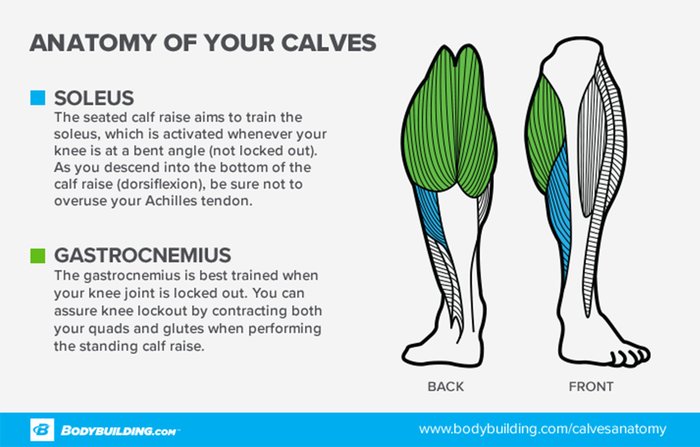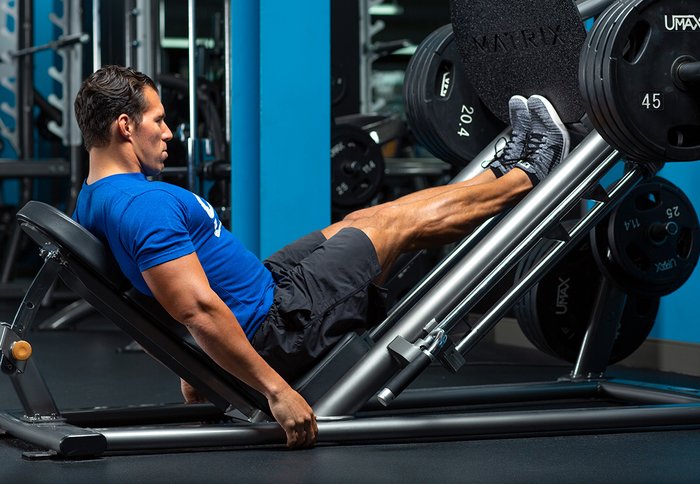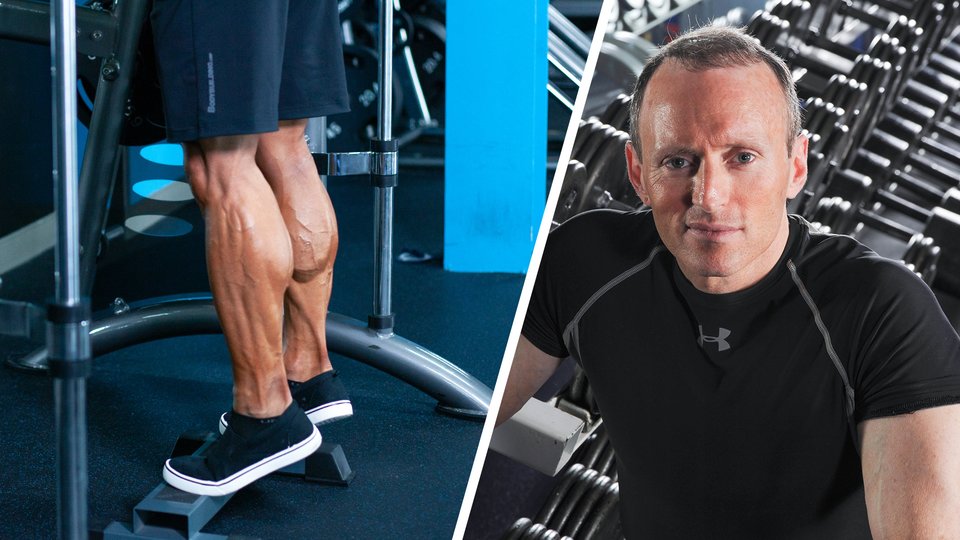Q: Is my calf development purely a function of my genetics, or can my training make a big impact?
The calves are perhaps the most underappreciated of all the so-called show muscles. Too often, calf training is regarded as an afterthought, thrown into the mix whenever it’s convenient. Worse, many people give up altogether on training the calves, believing that the muscle’s ability to grow is purely dictated by genetics; as the saying goes, “If you didn’t choose the right parents, you’ll never get your calves to grow.”
While genetic makeup is always a factor in muscular potential, a recent study from our lab showed that the calves do indeed respond robustly to regimented resistance training; in fact, about as well as the other major muscles of the body.
Here are the four key takeaways.
We recruited a group of college-aged men and had them perform 4 sets each of straight-legged and bent-legged calf raises, with sessions carried out twice a week.[1] The subjects did the exercises unilaterally, performing high reps with one leg (20-30 per set) and low reps with the other (6-10 per set). After eight weeks, the subjects had gained an average of 8-14 percent—a magnitude of growth similar to that generally seen in the quads and arm muscles over the same period.
Takeaway 1: When these results are considered along with the totality of hypertrophy research, genetics doesn’t seem to make any more difference in achieving calf gains than it does in the rest of the musculature.
A popular bodybuilding theory is to train the two primary calf muscles differently, working the soleus with high reps, as it’s primarily a slow-twitch muscle (containing more than 80 percent type 1 fibers), and the more fast-twitch-dominant gastrocnemius with heavier loads. In our study, however, rep range didn’t seem to make a difference in hypertrophy of the gastroc versus the soleus, indicating there’s no benefit to training a muscle based on its fiber type.

Takeaway 2: Both rep ranges can be effective, at least when it comes to targeting the calves.
On average, we observed similar increases in muscle size with the two rep ranges. Intriguingly, there were fairly large differences in how subjects responded to the rep ranges. Some grew better with high reps, others showed superior growth with lower reps, and for others, rep range didn’t seem to matter. The reasons for these interindividual differences aren’t clear, but findings suggest a need for personal experimentation; if your calves don’t respond to heavy loads, try going lighter for more reps and vice versa.
Note that you should include both straight-legged and bent-legged calf exercises to maximize calf development. Straight-legged exercises place the gastroc in a position of slight stretch, thereby increasing its ability to produce force. Alternatively, bent-legged exercises result in a slackening of the gastroc, allowing the soleus to dominate.
Takeaway 3: Combining the two types of movements ultimately provides muscle-building synergy, eliciting optimal growth in the calves as a whole.
Altering foot position is another relevant consideration as it can enhance hypertrophy of the individual gastroc heads. Research has shown that electromyographic (EMG) amplitude—a measure of muscle activation—is greater for the medial head when the feet are turned outward, and greater for the lateral head when they are turned inward.[2-4] Although these findings provide a rationale for altering foot position to enhance calf growth, higher EMG activity during exercise performance does not necessarily translate into greater muscle growth over time.[5]
The good news is that a recent study provides evidence supporting a potential benefit from the strategy. Brazilian researchers recruited a cohort of young men to perform unilateral straight-legged calf raises in a leg press machine, randomly assigning them to point their feet outward, inward, or straight ahead.[6] Subjects performed 3-4 sets of 20-25 repetitions, training three times per week over a nine-week period. The results showed significantly greater increases in muscle thickness for the medial gastroc when the feet were turned outward and greater growth in the lateral gastroc from the inward position.

Takeaway 4: While these results are preliminary, performing calf raises with the feet turned inward and outward is a strategy worth implementing, given that there doesn’t seem to be much of a downside.
In general, don’t neglect training your calves. Prioritize them as you would every other muscle group. Regardless of whether you’re genetically blessed, pretty much everyone has the ability to increase calf muscle size provided they take the proper approach and stay consistent in their workouts. You’ll need personal experimentation to optimize your genetic potential, and you can further enhance your development by employing strategic intensity techniques.
References:
- Schoenfeld, B. J., Vigotsky, A. D., Grgic, J., Haun, C., Contreras, B., Delcastillo, K., Francis, A., Cote, G., & Alto, A. (2020). Do the anatomical and physiological properties of a muscle determine its adaptive response to different loading protocols? Physiological Reports, 8(9), e14427.
- Cibulka, M., Wenthe, A., Boyle, Z., Callier, D., Schwerdt, A., Jarman, D., & Strube, M. J. (2017). Variation in medial and lateral gastrocnemius muscle activity with foot position. International Journal of Sports Physical Therapy, 12, 233-241.
- Marcori, A.J., Moura, T. B. M. A., & Okazaki, V. H. A. (2017). Gastrocnemius muscle activation during plantar flexion with different feet positioning in physically active young men. Isokinetics and Exercise Science, 25, 121-125.
- Riemann, B. L., Limbaugh, G. K., Eitner, J. D., & LeFavi, R. G. (2011). Medial and lateral gastrocnemius activation differences during heel-raise exercise with three different foot positions. The Journal of Strength and Conditioning Research, 25, 634-639.
- Vigotsky, A. D., Halperin, I., Lehman, G. J., Trajano, G. S., & Vieira, T. M. (2018). Interpreting signal amplitudes in surface electromyography studies in sport and rehabilitation sciences. Frontiers in Physiology, 8, 985.
- Nunes, J.P., Costa, B.D., Kassiano, W., Kunevaliki, G., Souza, A.L., Fortes, L.S., Cyrino, E.S. and Cid, R.C.G.(2020). Different foot positioning during calf training to induce portion-specific gastrocnemius muscle hypertrophy. The Journal of Strength and Conditioning Research, in press.
